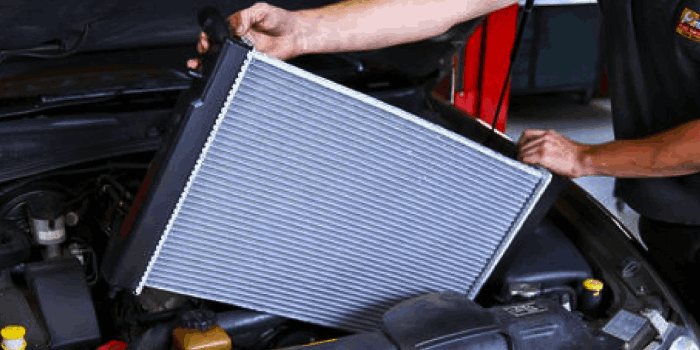Find Your Car Parts Instantly
- Best Price Guarantee Buy with confidence because you aren't getting a better price than this.
- Free Shipping Enjoy the luxury of free shipping on orders above $299.
- A Grade Quality Used Car Parts
Avail the best OEM Auto parts & components that are just as new - Our Friendly Parts Specialist will get you what you need !
What Is a Radiator?

The radiator helps keep your vehicle cool, but how exactly does it achieve this goal?
The engine in a vehicle burns fuel and creates energy, which generates heat. Venting this heat away from engine parts is important to prevent damage.
Radiators work to eliminate heat from the engine. The process begins when the thermostat in the front of the engine detects excess heat. Then coolant and water get released from the radiator and sent through the engine to absorb this heat.
Once the liquid picks up excess heat, it is sent back to the radiator, which works to blow air across it and cool it down, exchanging the heat with the air outside the vehicle.
The radiator utilizes thin metal fins during the process, which are effective at allowing heat to quickly escape to the air outside the car. These fins are often working alongside the fan that’s blowing air across the radiator.
Long story short, the answer to “What’s a radiator in a car?” is simple — It is a heat exchange that cools fluid, which cools down the engine.
Where Is the Radiator in a Car?
The radiator is located under the hood and in front of the engine. The coolant reservoir is located next to these components as well.
Parts of a Radiator
There are a few main parts that make up the radiator, and each plays a role in the cooling process. They are:
Core: The core is the largest part of the radiator. It’s a metal block that features the metal cooling fins that help vent the air. The core is where hot liquid releases heat and gets cooled before being sent through the process again.
Pressure cap: The pressure cap works to help seal the cooling system so it can remain pressurized. Coolant in the radiator is pressurized to prevent the coolant from boiling. It also keeps the system more efficient.
Inlet and outlet tanks: These tanks are where coolant flows in and out of the radiator and are located in the radiator head. Hot liquid flows from the engine through the inlet tank, and once it is cooled, goes out through the outlet tank and back into the engine.
Radiator hoses: Coolant moves through the engine via the radiator hoses. They are important for connecting the inlet and outlet tanks to the radiator and the engine.
Other Important Cooling System PartsThere are other important cooling system parts that work alongside your radiator, including the water pump and the thermostat.
As mentioned earlier, the thermostat regulates the engine’s temperature. If the engine needs to be cooled, the thermostat will open to allow an influx of coolant. It closes if the engine is at the proper operating temperature.
The water pump pushes the coolant through the system. This component is usually operated by the engine drive belt, which turns on the pump, and spinning blades force liquid through the system as needed. Gaskets and seals keep the coolant contained.
Signs of a Failing RadiatorOver time, different parts of the cooling system can begin to wear down. For a more general overview, read up on the most common cooling system problems.
A few signs that your radiator specifically is having issues can include:Leaking coolant: Cracks or leaks in the radiator will cause coolant to appear on the ground underneath your vehicle. This can happen when your vehicle is parked or when you’re driving. If you notice this or low coolant levels, you might have a crack in your radiator.
Discolored coolant or sludge: Coolant is usually a thin consistency and colored green or yellow. Rust and debris from a failing radiator might cause contamination in the fluid that can turn it a dark or rusty color. It also might become thicker and create sludge, which can prevent it from cooling the engine.
Overheating: A vehicle constantly overheating could be a radiator issue, since the radiator is the way engine heat is removed.